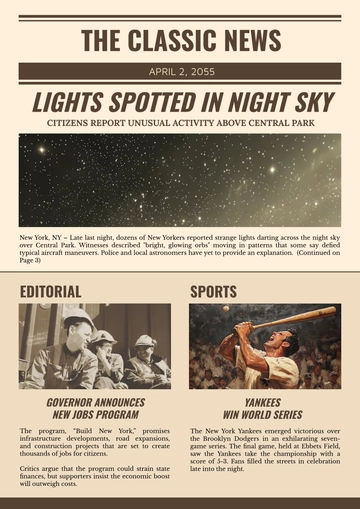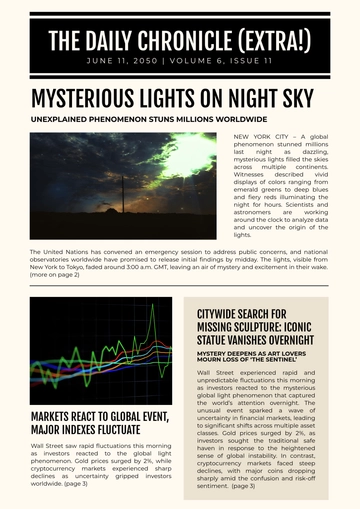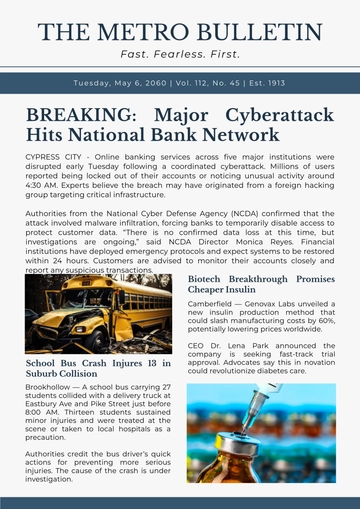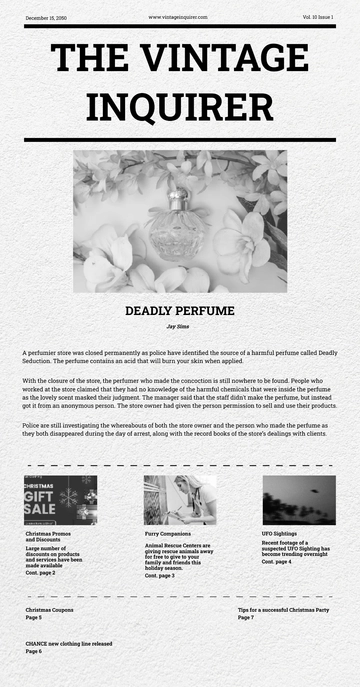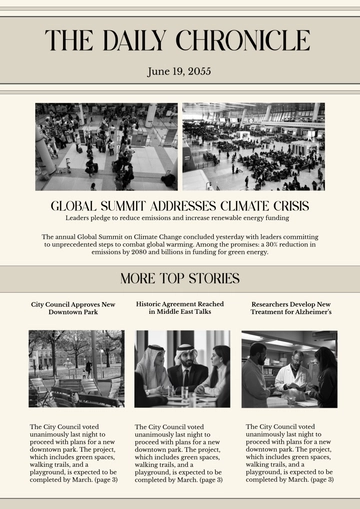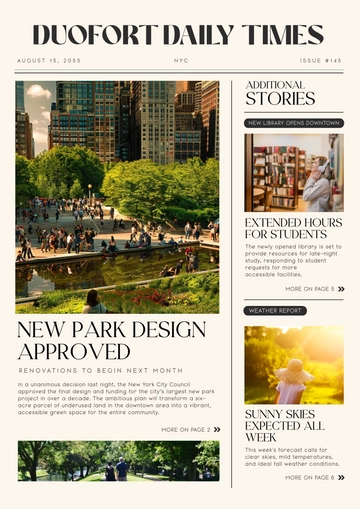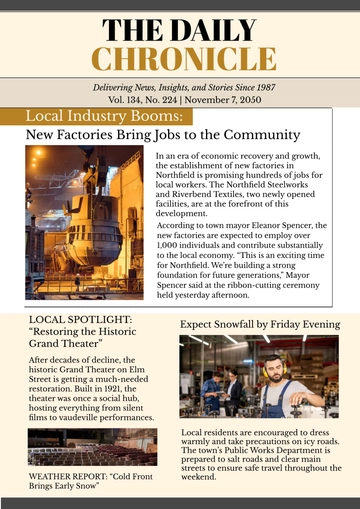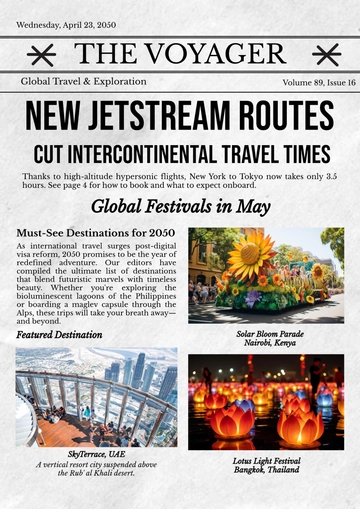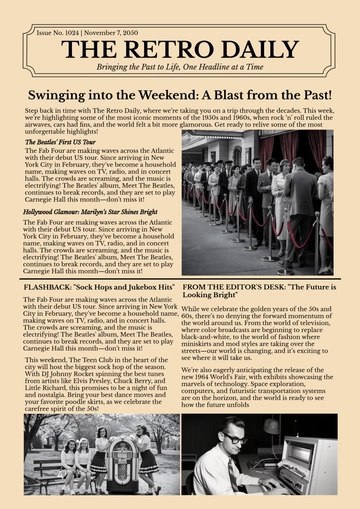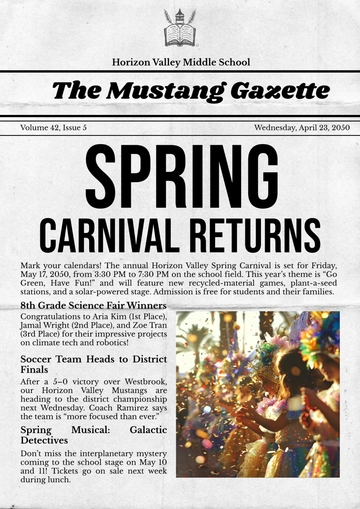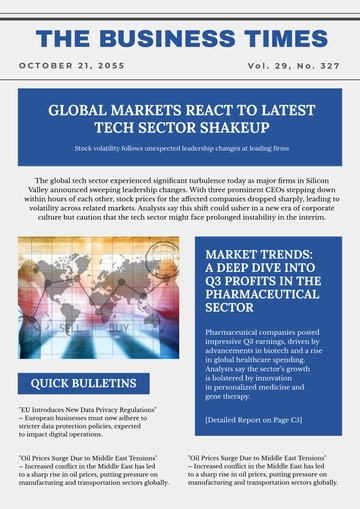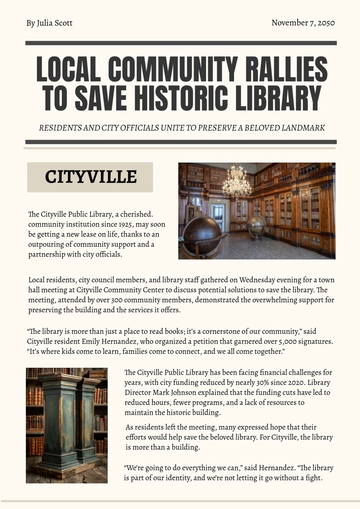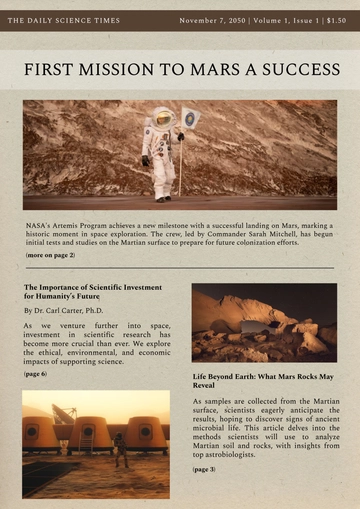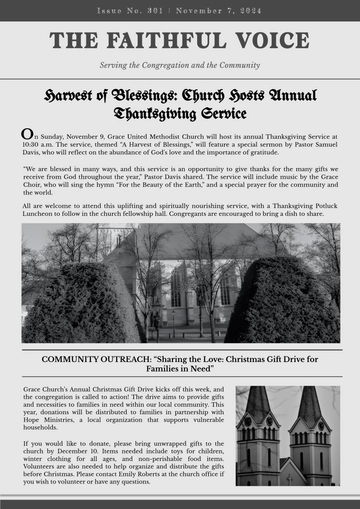Free Newspaper Editorial Article
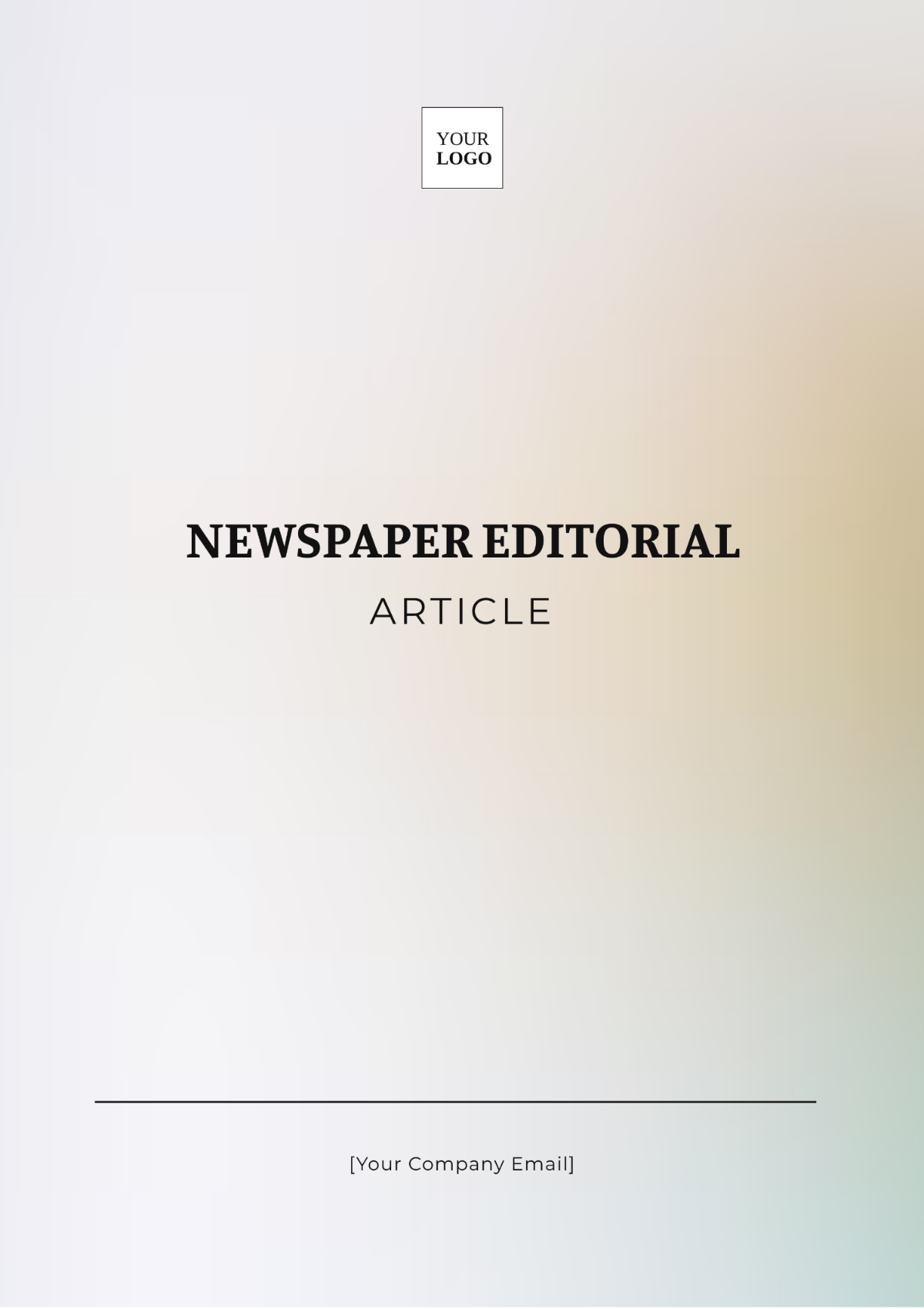
Headline: Revitalizing Public Transportation: A Necessary Investment for Our City
Byline: [Your Name]
Introduction
In recent years, our city has faced increasing traffic congestion and environmental concerns. As urban growth continues, it’s clear that the current state of our public transportation system is insufficient to meet the needs of our residents. This editorial argues that investing in and revitalizing our public transit infrastructure is essential for improving the quality of life and addressing pressing environmental issues.
Background Information
Our city’s public transportation system, established over years ago, has struggled to keep pace with population growth and technological advancements. Recent reports show that bus and train services are frequently delayed, and routes do not cover many of the newly developed areas. Additionally, traffic congestion has worsened, contributing to increased pollution and decreased productivity.
Historical Context
The original design of our public transportation system aimed to serve a much smaller population. Since its inception, the city’s population has grown by 50%, but the transit infrastructure has not expanded proportionately. Historical underfunding and lack of strategic planning have exacerbated the problem, leaving many residents with limited transit options.
Current Challenges
Service Reliability: Delays and inconsistent service make public transit unreliable for daily commuters. The average wait time for buses has increased by 20% in the past year alone.
Coverage Gaps: Many new residential and commercial areas are not served by public transit, leading to increased reliance on private vehicles.
Environmental Impact: The aging fleet of buses and trains contributes to higher emissions and worsens air quality, contrary to the city’s sustainability goals.
Success Stories
Cities that have invested in modernizing their public transportation systems have seen remarkable improvements. For example, Seattle’s recent investment in light rail expansion has led to a 30% increase in ridership and a significant reduction in traffic congestion. Similarly, Copenhagen’s investment in bicycle-friendly infrastructure has made it one of the most sustainable cities in Europe.
Community Feedback
Residents have expressed strong support for improved public transportation. Surveys show that 70% of city residents believe enhanced transit options would improve their quality of life. Local businesses also support the initiative, as better transit access can drive customer traffic and reduce parking issues.
Proposed Solutions
Modernized Fleet: Invest in new, energy-efficient buses and trains to reduce emissions and improve service reliability.
Expanded Routes: Develop new routes and extend existing ones to cover underserved areas, making public transit a viable option for more residents.
Technological Upgrades: Implement real-time tracking and scheduling systems to provide accurate information and enhance the user experience.
Counterarguments
Some critics argue that the cost of upgrading public transportation is too high and that funds could be better spent on other city services. However, the long-term benefits of improved transit infrastructure outweigh the initial investment. Research shows that cities with robust public transportation systems see reduced transportation costs for residents and increased economic activity, which ultimately benefits the entire community.
Conclusion
The need for a modern and efficient public transportation system in our city is undeniable. By committing to this investment, we will enhance accessibility, protect the environment, and drive economic growth. It’s time for our city to take bold steps toward revitalizing our public transit infrastructure and securing a better future for all residents.
- 100% Customizable, free editor
- Access 1 Million+ Templates, photo’s & graphics
- Download or share as a template
- Click and replace photos, graphics, text, backgrounds
- Resize, crop, AI write & more
- Access advanced editor
Express strong opinions and viewpoints with our Newspaper Editorial Article Template from Template.net. This fully customizable and editable template is designed for editorial content and can be easily edited in our Ai Editor Tool to match your publication’s voice and style.


